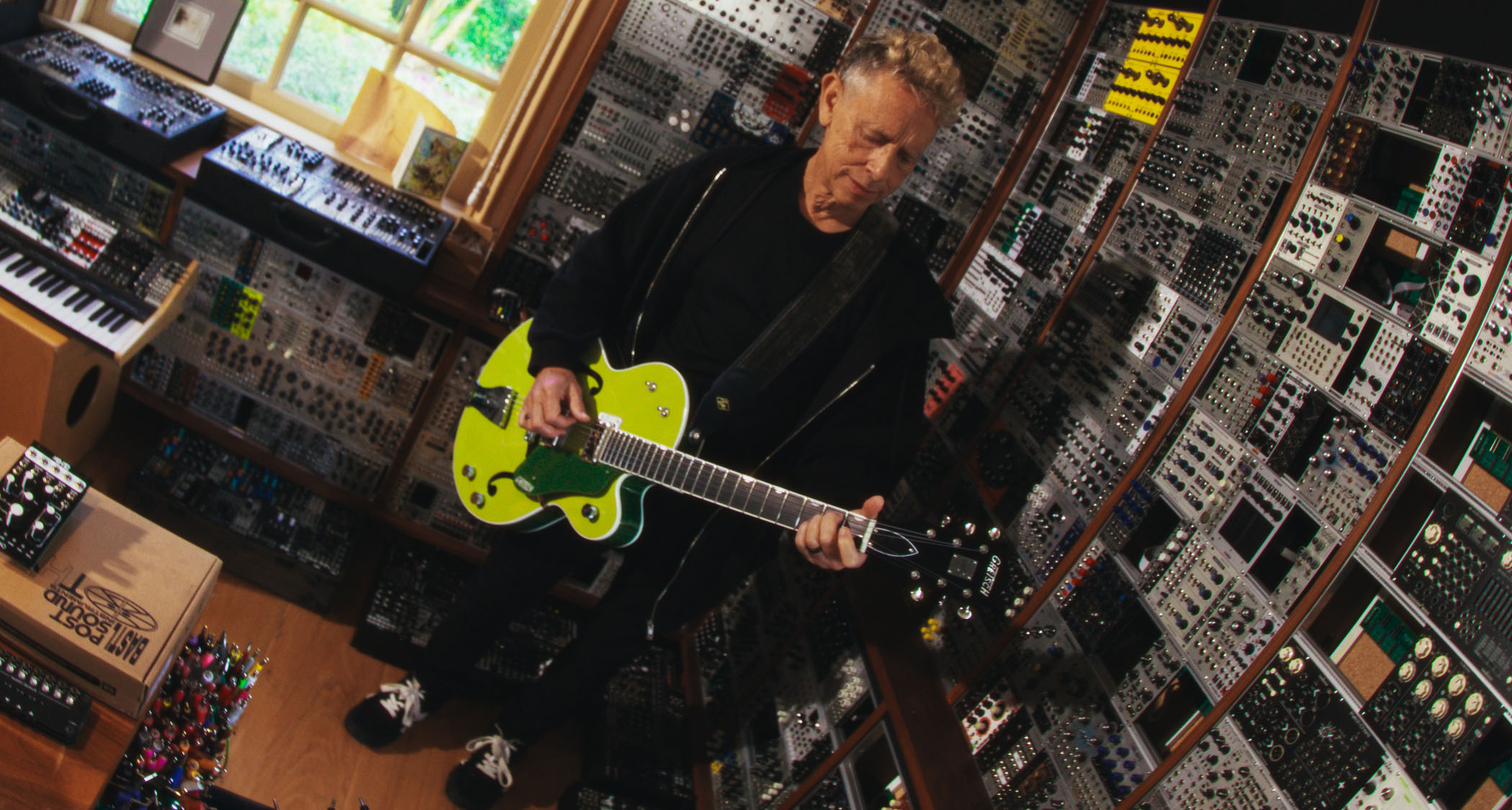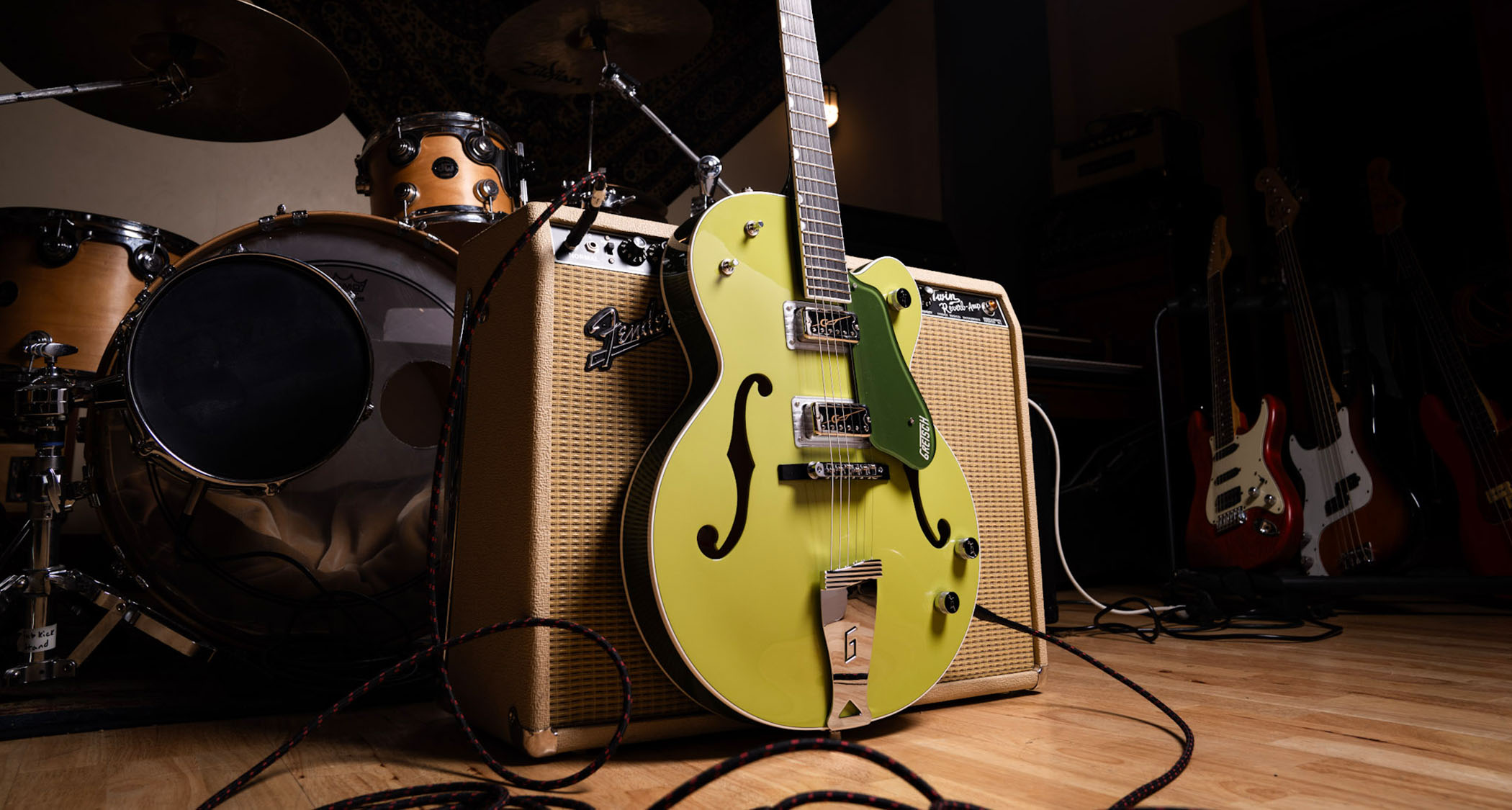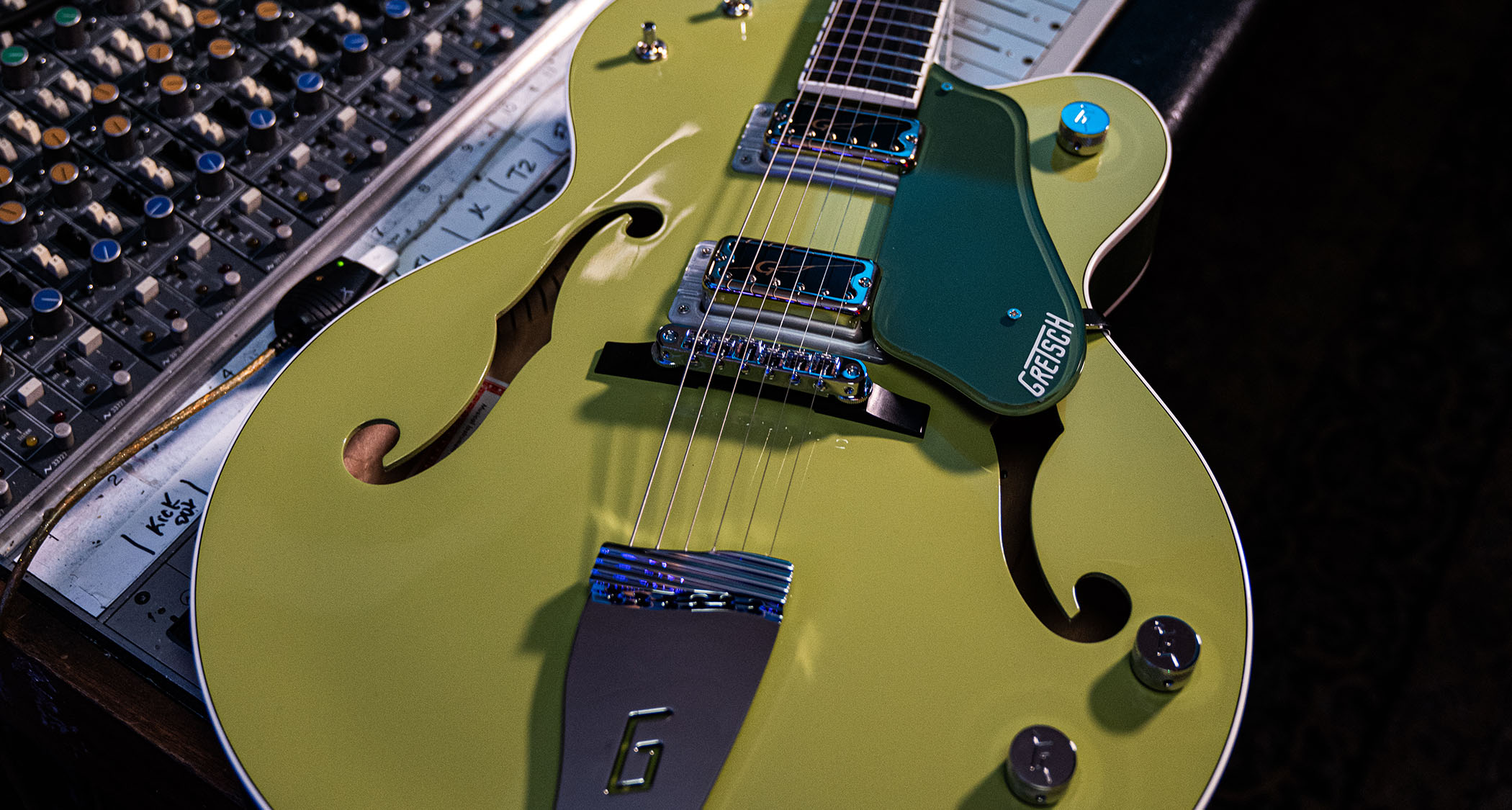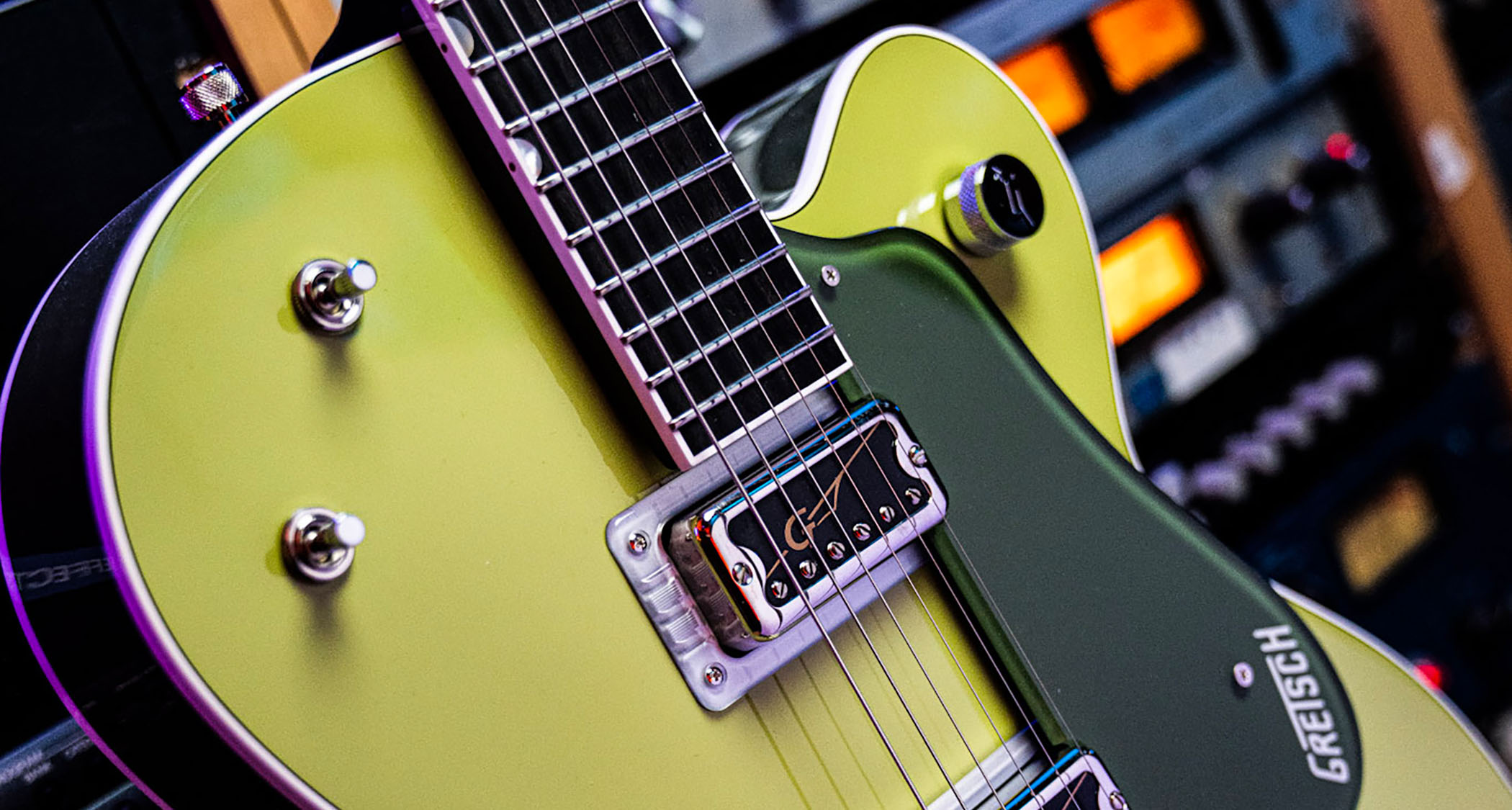
Gretsch and Martin Gore of Depeche Mode have unveiled a limited edition signature guitar that refinishes the classic Center Block single-cut in a stunning Two-Tone Smoke Green finish, with chrome hardware giving it that vintage automobile-meets-guitar aesthetic.
Equipped with a pair of TV Jones TV-HT single-coil electric guitar pickups, G6618-MG Martin Gore Anniversary Center Block promises to be a bona-fide twang machine, and a redoubtable conduit of ‘That Great Gretsch Sound’. But, you might ask yourself, what is Gore, an artist whose legacy is inextricably linked to the rise of the synthesizer in popular music, doing with an electric guitar in his hands?
Well, the G6618-MG takes Gore right back to the beginning of his musical career, when he was a young buck, weaned on rock ’n’ roll, and as he says in Gretsch’s short-film, In Tune with Martin Gore, which can be viewed below, those no-guitar rules in Depeche Mode were a little bit fuzzier once the band had established itself
“We were an all-electronic band when we started,” says Gore. “Even though I had been a guitar player when I was younger, we had a rule that we were synth-purists, but by about 1987 we recorded Behind The Wheel and we started relaxing some of our rules.”
The band were vindicated. Behind The Wheel might have brought guitar to the fore but this is still electronically driven pop, with Gore’s guitar tracing out the melody in the background.
That guitar tone might have been recontextualised in the hitherto hostile mix of synth and drum machine but it was a subtle tell of where Gore’s formative influences lay. As he mentions in the video, it all began with rock ’n’ roll. And that’s how the guitar came into his life. Gretsch guitars were always his favourite.
“I discovered my Mum’s record collection when I was 10, rock ’n’ roll, it was like ‘50s and ‘60s stuff. There was just something about it. I then found a record player and took that into my room and just used to listen non-stop. I was hooked on music. When I was 13, I had a friend who played guitar; he was quite good. He taught me two or three chords and I kind of took it from there.”

Gore’s G6618-MG has a 16” wide maple body, with the eponymous chambered maple centre block in place to boost sustain and cut out feedback once the guitar amp is pushed and there’s lots of volume in the mix. It measures 2.375” deep, and has a glued-in maple neck with one of Gretsch’s super-comfortable Standard U profiles.
Combined with the 24.6” scale length, the 12” radius fingerboard, the Gretsch Center Block is a very player-friendly instrument. Mother of Pearl Neo-Classic inlays count out the frets – there are 22 of them, the fret-wire medium-jumbo.
There are individual pickup volume controls, a master volume with a treble bleed circuit so it stays bright as you dial back on the control. What this doesn’t have is a tone dial. Instead a three-position switch chooses your tone options.


Other details to note include a bone nut, the Kluson Deluxe tuners, the Custom “MG” signature badge on the headstock, and the TonePros roller bridge. A special mention goes to that stunning Gretsch G-cutout tailpiece, which is worth the asking priced alone.
“I am very honoured to be a Gretsch Signature guitarist because I have been a massive fan for so long,” says Gore. “They are by far my favourite guitars, so it is a great honour. It is going to be an amazing feeling to walk in and see them in the shops.”
When you do see one in the shops or online, expect to pay £2,849/$2,999, including a hard-shell guitar case. For more details, check out the video above or head over to Gretsch. And if you want to learn more about Gores's amazing studio, check out MusicRadar's interview with its designer, Jim Keller.







